Before I will elaborate on the Hippo-Stadium at Caesarea I would like to talk about the Hippodrome more in general. Firstly the word Hippodrome comes from Greek, which is made of two separate words. First is Hippos – horse and the second Drumos – track, race). In antiquity, the Hippodrome was a horse and chariot track; which was used from the Archaic period in Greece to the Byzantine period.
Furthermore, the use of the Hippodrome was already found in ancient Greece at the beginning of the Olympic Games and was mainly a horse racing track. The Hippodrome was significantly developed in the Roman period, in which it acquired clear architectural features, and hosted events of various kinds. In the Middle East, the first hippodromes were built by Herod, Jerusalem, Jericho, and Caesarea.
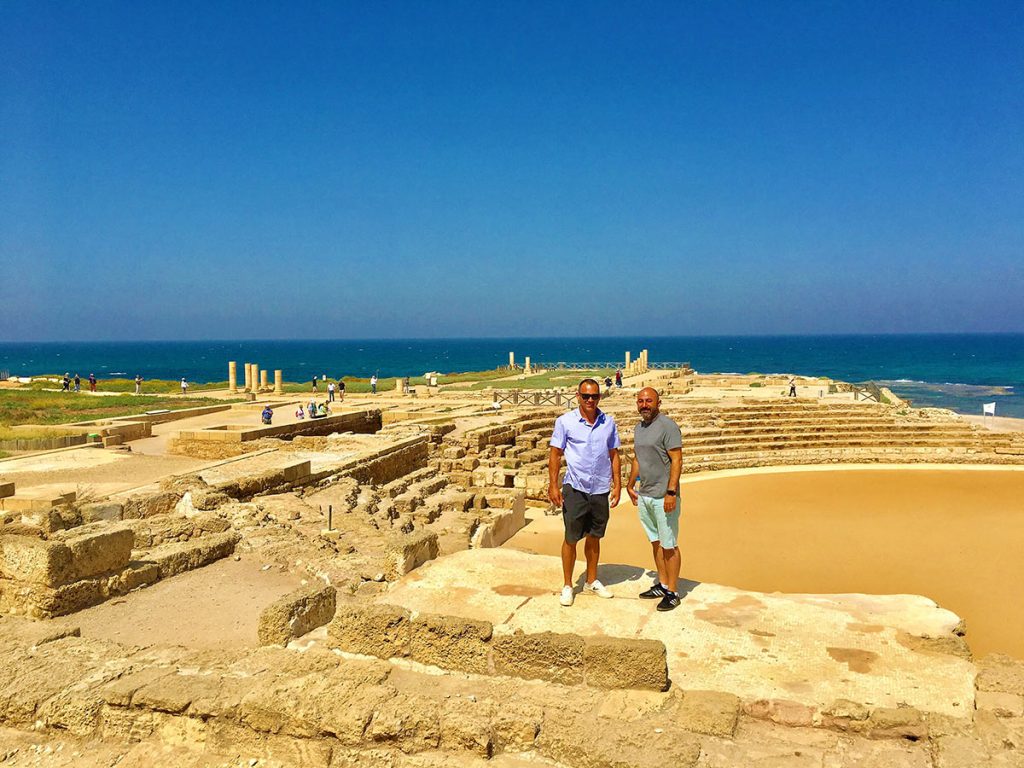
More About the Hippo-Stadium at Caesarea
In the first centuries CE, the theater and the Hippo-Stadium were part of the city life in the Land of Israel during the Roman period. Magnificent facilities meant for games were erected throughout the empire; and the important cities of the Land of Israel boasted a variety of theaters, amphitheaters, and hippodromes.
The inhabitants of the big cities were now the consumers of Roman culture. So it is possible that they themselves financed the construction of the facilities in cities like Caesarea. These facilities testify to the extent to which the diffusion of Roman culture among the inhabitants of the Holy Land has extended.
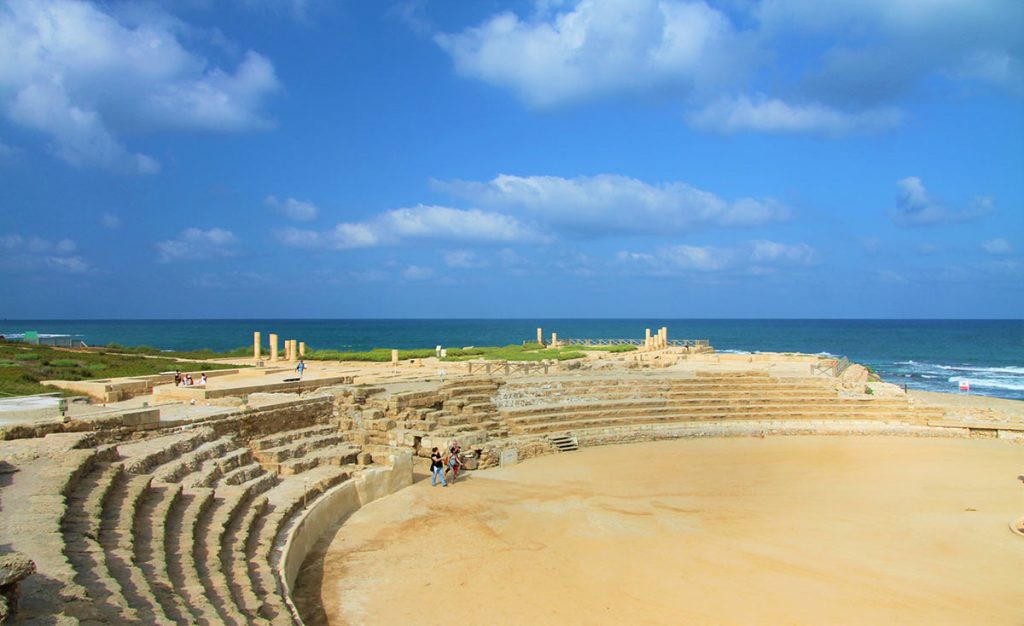
Various fun & games took place in the East as early as the Hellenistic period. But Herod, king of Judah, was the first ruler to import Roman games and Roman culture with all its components into the Syrian-Palestine region. Furthermore, Herod built a long and magnificent line of Roman facilities in the cities of the Land of Israel and elsewhere.
In these facilities, he funded and held various shows, which were foreign to the local Jewish culture, in the Land of Israel in those days. The first hippodromes were built by Herod in Jerusalem, Jericho, and Caesarea. The Hippodrome in Tarichaea (Magdala) and the stadium in Tiberias were probably founded by Herod’s son, Antipas when he ruled Galilee.
Josephus Reports About the Hippo-Stadium at Caesarea
Athletics and horse racing competitions were also held in Caesarea with the establishment of the city. According to the historian Josephus, Herod established a theater in Caesarea, and south of the port, he built the amphitheater:
“which was to accommodate a large number of people and is located in a place that is convenient to look out over the sea”
(Anquituieties. 10: 341)
However, he does not say whether the king built in the city a hippodrome or a stadium. It is only later in his remarks, in connection with Pontius Pilate, that Josephus mentions the stadium, a fact which probably indicates the existence of this structure in the city.
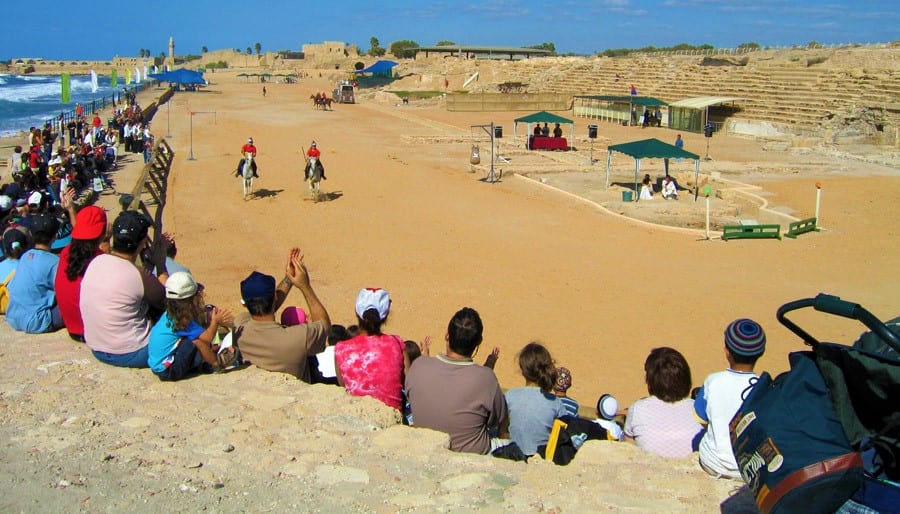
The Roman Hippodrome in Caesarea is built as a rectangular structure, with a rounded wall at the end. The building in Caesarea seems to be the amphitheater that Josephus mentions in his description. In the days of Josephus, it was customary to call the “amphitheater” not only the building familiar to us in its known shape. But also the Roman Hippodrome. Indeed the word “amphitheater” seems to have been flexible at the time and was used to denote any structure in which the rows of seats were arranged around one focal point.
The Hippo Stadium At Caesarea: Athletics and Horse Racing
In the first centuries CE, the cities organized the games independently. They took care of the full financing of the events, provided all the needs of the competitors, and gave expensive prizes to the winners. The games were held to mark a particular historical event, in honor of kings, emperors, or city gods. During the second and third centuries CE, there was an increase in the number of competitions and places where they were held. The great demand led to the construction of additional hippodromes in the Land of Israel during this period.
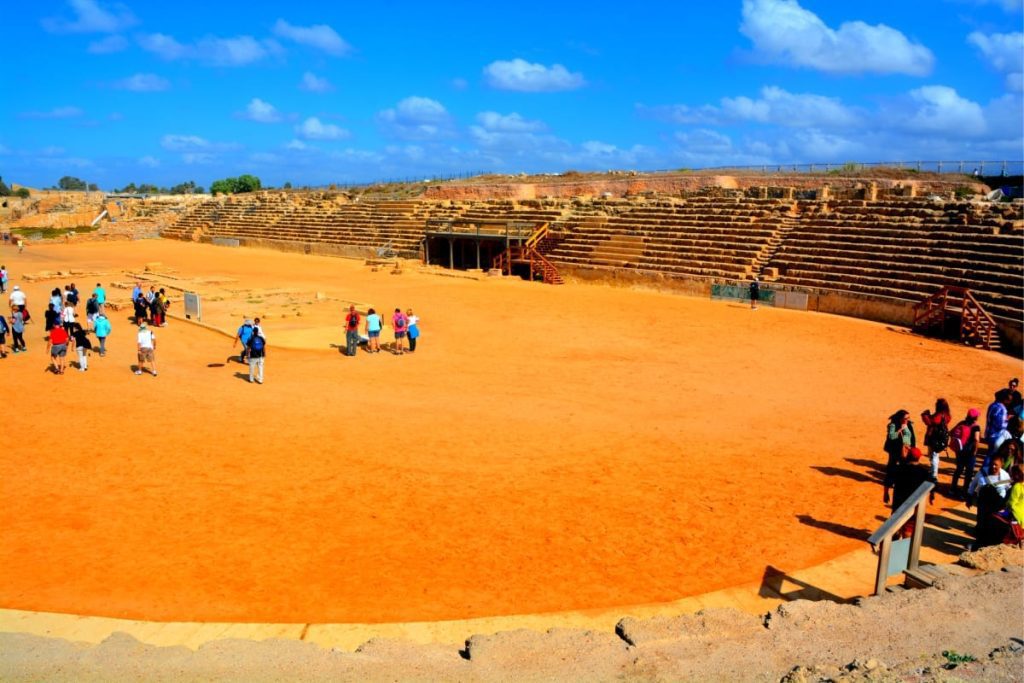
Athletics and horse racing competitions were held throughout Israel during the Roman period. Herod held games in honor of Augustus in Caesarea in 10/9 BCE, celebrations that were also associated with the latter’s victory at the Battle of Actium in 31 BCE. Herod stated that the games would be held once every four years. The many games held throughout the Roman Empire attracted the best athletes from the eastern cities. The winner of the athletics and horse racing competitions was crowned with a palm tree as a sign of victory, in addition to the cash prize he received.
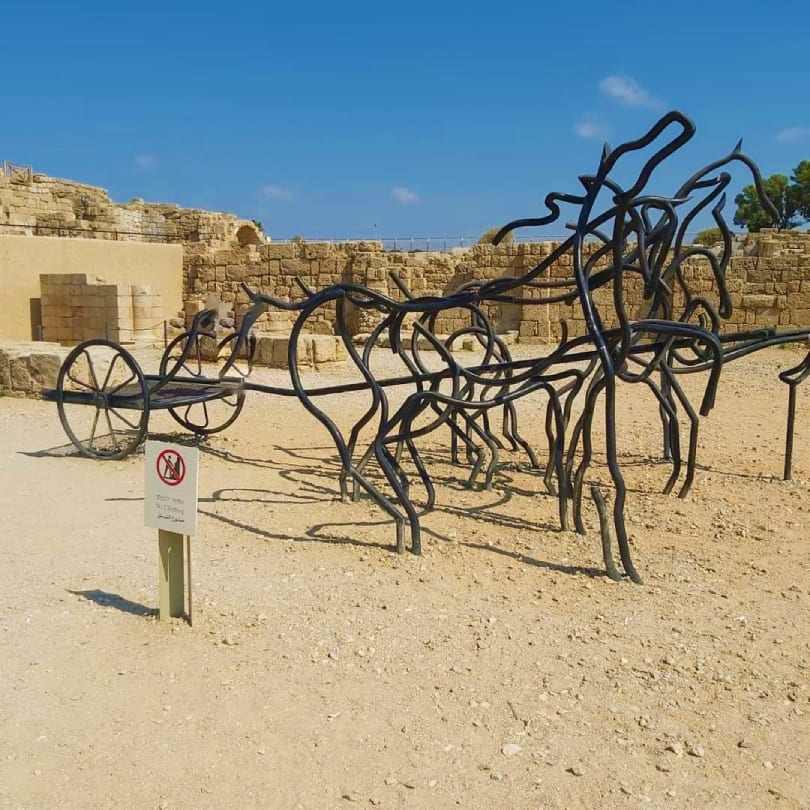
Gladiator Fights at Caesarea
A gladiator (Latin: gladiator, “swordsman”, from gladius, “sword”) was an armed combatant who entertained audiences in the Roman Republic and Roman Empire in violent confrontations with other gladiators, wild animals, and condemned criminals. Some gladiators were volunteers who risked their lives and their legal and social standing by appearing in the arena. Most were despised as slaves, schooled under harsh conditions, socially marginalized, and segregated even in death.
There is little information about gladiatorial battles in the eastern side of the empire. The shows were held by the Roman rulers in cities of Hellenistic character; In Judea, for example, Herod performed such gladiator fights in Caesarea, and Josephus, in “The Antiquities of the Jews,” explicitly writes that gladiatorial games also took place in Jerusalem. Few existing sources on this subject show that Jews also took an active part in these shows, usually being captives or slaves, as the description shows:
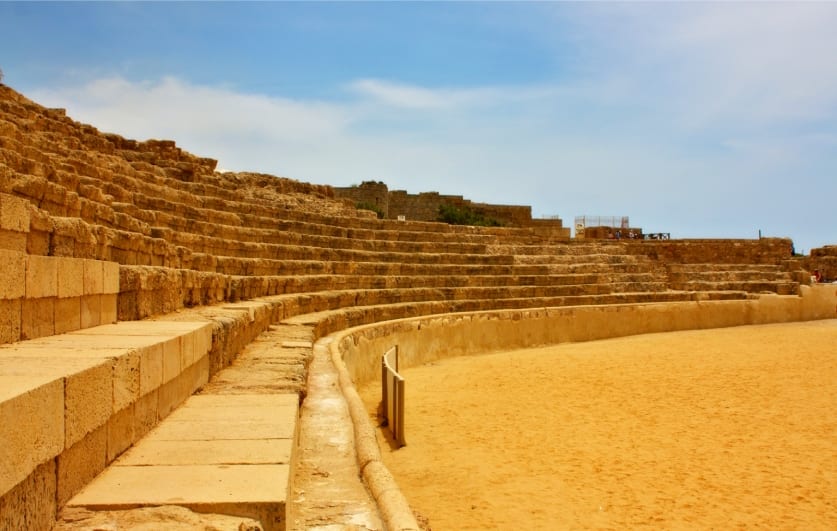
“While Titus was at Cesarea, he solemnized the birthday of his brother [Domitian], (2) after a splendid manner: and inflicted a great deal of the punishment intended for the Jews in honor of him. For the number of those that were now slain in fighting with the beasts, and were burnt, and fought with one another, exceeded two thousand five hundred”
Josephus, Jewish Wars Chapter 3
In later stages, these were also economic circumstances that led desperate Jews to attend gladiatorial and animal shows. In the middle of the third century CE, an economic crisis plagued the Roman Empire and the Land of Israel in general, and more than once he forced people to participate in these shows, which were well paid. It is also probable that some of the Jews who ended their lives in the gladiatorial games at the Holy Land amphitheaters were brought for burial at their homeland.







